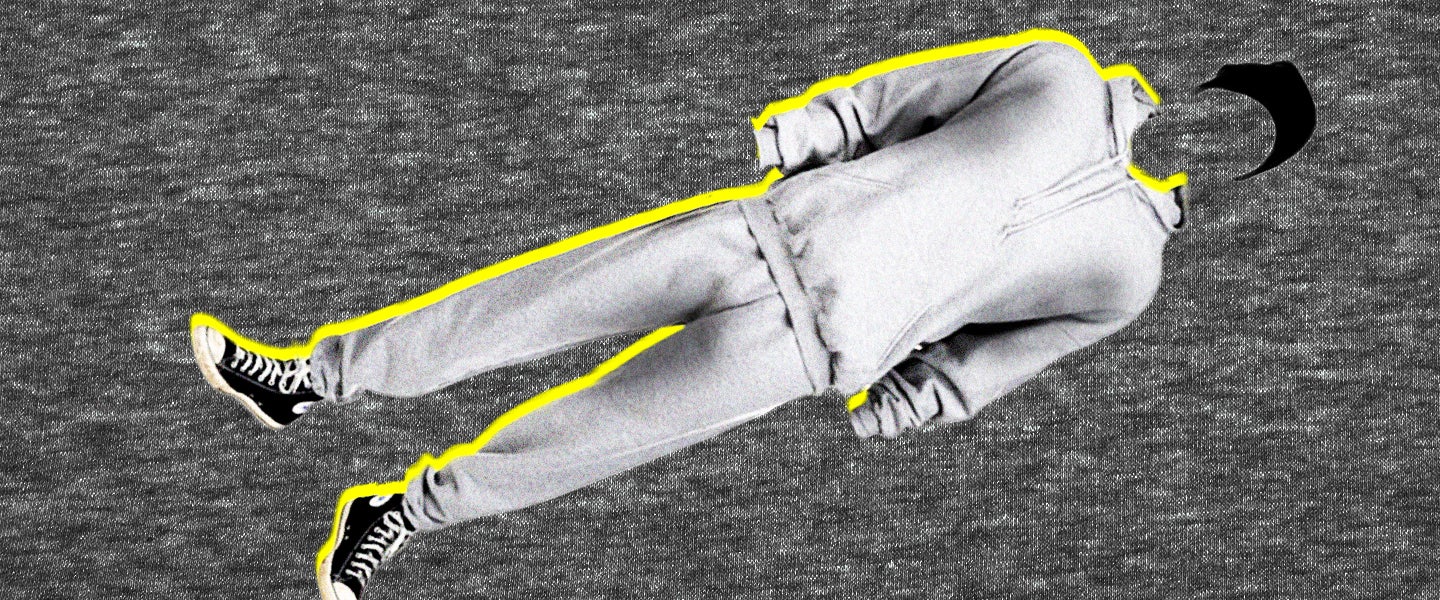Like many guys who struggle to go to the gym, I pump myself up by watching motivational fitness videos on YouTube. My favorites are classic montages from Rocky and Rocky II, which to the backing of Bill Conti’s “Gonna Fly Now,” feature Sylvester Stallone hitting raw meat, doing one-armed push-ups and running through the streets of Philadelphia. These videos represent the peak of the fitness motivation genre on social media, not least because of Rocky’s attire — namely, Chuck Taylor All-Stars and a plain grey sweater and jogging pants, both of which are made from cotton.
Rocky’s look is typical of the 1970s, when the movie is set. The design of his sweatsuit was based off the French tailor Émile Camuset’s textile patterns at Le Coq Sportif, one of Europe’s first athletics brands. Camuset’s sweatsuit, which he produced in the 1920s, incorporated three types of fabric (cotton ribs, brushed fleece and jersey), creating a stretchy, breathable fit for athletes. Over time, as my colleague Brian Van Hooker has written, baggy cotton sweatpants quickly became standard as both gym- and leisurewear, inspired by Rocky and the general growth of gyms and fitness culture.
In the 1990s, though, the baggy sweatpants look became less popular for casualwear, best depicted in a 1993 episode of Seinfeld when Jerry lampoons George for wearing them, telling him he’s “given up on the world.” A sentiment echoed by Karl Lagerfeld: “Sweatpants are a sign of defeat. You lost control of your life, so you bought some sweatpants.” Basically, by the end of the 1990s then, sweatpants existed for two reasons — to mope around at home, or to workout in.
And while sweatpants are once again popular as casual “athleisure,” a trend that’s helped sportswear secure a place in high fashion, you’d be hard-pressed to find a pair of cotton sweatpants, let alone an entire sweatsuit, in a gym in 2019. You’re much more likely likely to see people wearing nylon or polyester fitted garments. In fact, if anything, most modern gym clothing is the exact opposite of the cotton sweatsuit — lightweight, sweat-minimizing (think the Nike Dri-Fit range), breathable and tapered to “optimize acceleration.”
To some extent, this reflects changes in fitness trends more generally. Yoga and pilates require outfits that are light and stretchy, as heavy and baggy clothing would be an impediment. The same goes for high-intensity workouts like CrossFit. “I can do a lot more [with a client] if the clothes they’re wearing allow more oxygen to flow through their body,” says personal trainer Nick Young. “Every person I work with has a body that works differently, but they can’t work to their maximum if their blood flow isn’t steady. With cotton, because it also stores a lot of heat to keep the body warm, it can make people tired and dehydrated way faster than if you’re using breathable materials.”
Yet, for some reason, I still wear baggy cotton jogging pants when I go running outdoors, along with an old, cotton T-shirt. As a casual gym attendee, the cotton cloth provides comfort, something that’s important to me when performing activities designed to make me uncomfortable. I’m not trying to impress anyone, thirst trap on Instagram or expecting to be recruited as a model for Gymshark. Instead, my cotton gymwear exists to retain as much sweat as possible for the hour I’m on the treadmill or lifting weights. And though no one comments on my attire, I can’t help but feel that I stick out when everyone else is draped head-to-toe in sleek, color-matching nylon and lycra.
I’m not completely alone, though. “I tried wearing tighter-fit leggings, but I didn’t like how they’d stick to me,” says 29-year-old Sam Hayes, a regular gym-goer since his teens and someone who regularly reads Men’s Health and has a notebook detailing precise workouts for every muscle group. “Especially when you’re sweating, the last thing you want is for your clothes to feel like they’re glued to you, or that you have to take off your shirt and wring out the sweat before you can continue.”
I’m also not alone in feeling like an outsider at the gym for doing so. Twenty-five-year-old Akshay Kumar, a graduate student in physics at the University of Rotterdam in the Netherlands, tells me that while wearing cotton sweatpants and sweatshirts help him — especially as a man who’s self-conscious about how he looks — he regularly feels “looked down [upon]” by regular gym-goers. “There’s a [prejudice] against people who don’t look like ‘gym guys’ on Instagram,” Kumar says, referencing the men found within hashtags like #gymmotivation and #summerbody.
Some of that obviously has to do with body type, but part of it, too, he’s convinced is about his sweatpants: “There’s an element of not being treated seriously, even by members of staff, when you’re dressed in casualwear. They think that you’re going to the gym in your pajamas, rather than to work out.”
In a 2012 study, researchers at Northwestern University illustrated the ways in which clothing can influence how we think and act, showing how even when performing the most basic of tasks in a laboratory, people wearing lab coats performed better and more efficiently. The researchers called the phenomenon “enclothed cognition” and told The Atlantic: “It’s all about the symbolic meaning that you associate with a particular item of clothing. It would make sense that when you wear athletic clothing, you become more active and more likely to go to the gym and work out.”
“When fashion designers are creating clothes, they’re thinking about functionality first, but they’re also thinking about the consumer’s emotional relationship with the clothes they’re wearing,” says Rob Warner, the co-founder of the global fashion agency Spark who has worked with brands like Umbro and Lululemon. “There was a time, perhaps, when gym clothes were just that. Things that you would wear, sweat in and then wash and do it again. But fashion designers now think about the need for function and how we want our material things to function as efficiently as possible, in a similar way that we think about technology. A designer wants the person who’s wearing their clothes to feel their best, and also to perform their best — not just in sport, but in everything they do.”
For me, though, the utility of nylon will never beat the comfort I feel when swathed in cotton — maybe most especially when that cotton is soaked in sweat.

